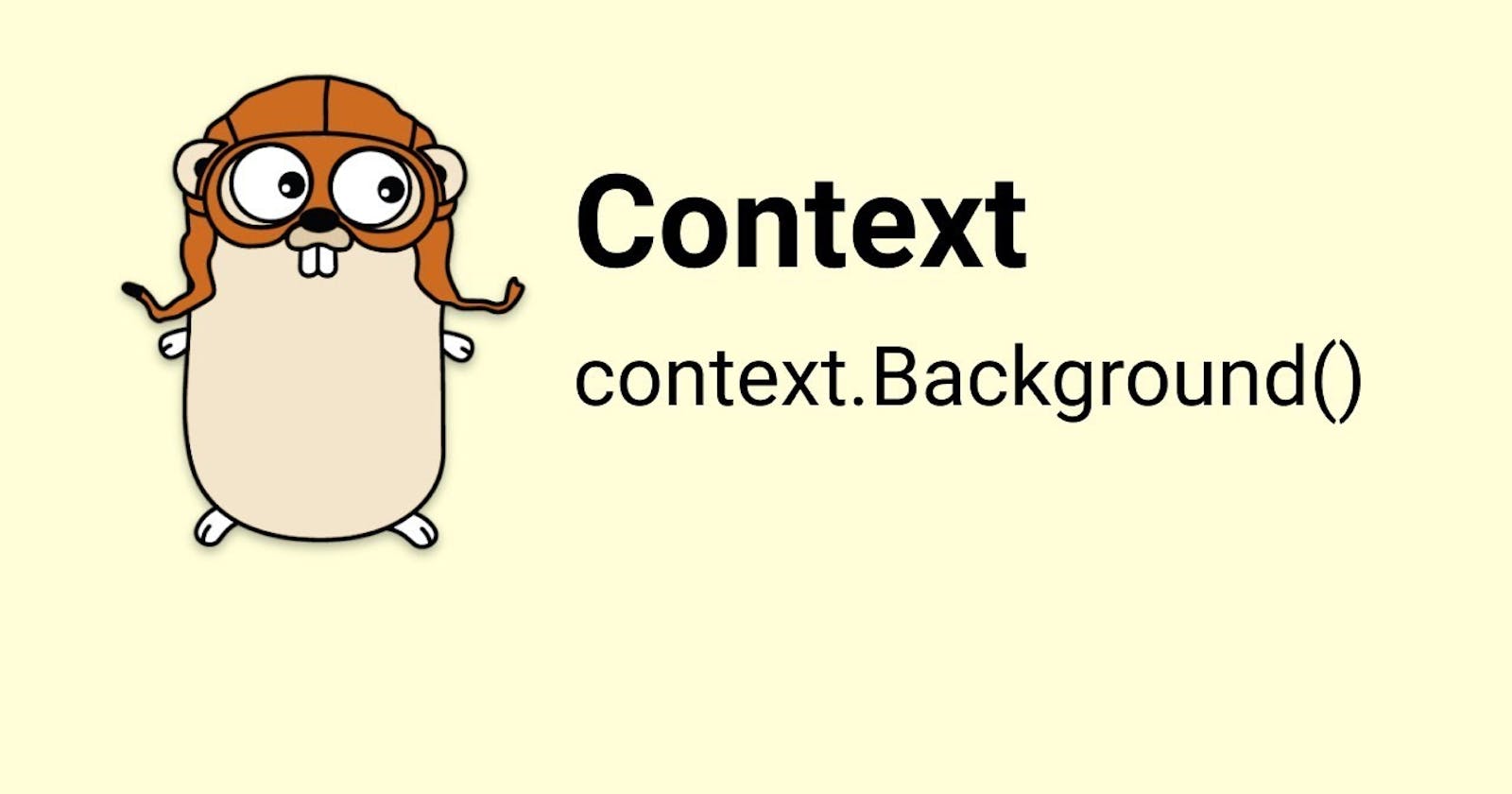1. Introduction
Concurrency and cancellation are critical aspects of building robust and efficient applications. Go provides a powerful and convenient way to manage these concerns through the context package. In this article, we will explore the context package in Go and understand its significance in managing concurrent operations and gracefully handling cancellations. We will also provide practical examples to demonstrate the usage of contexts in Go applications.
The context package introduced in Go 1.7 provides a standardized way to propagate request-scoped values, deadlines, and cancellation signals across a call chain. It allows developers to manage the lifecycle and cancellation of concurrent operations in a clean and efficient manner.
2. Some context types and example
The context package primarily provides four context types: Background, TODO, WithValue, and WithCancel. These types act as starting points for creating derived contexts to manage specific requirements.
context.Background(): TheBackgroundcontext is the root of all contexts. It is typically used when there is no parent context available. TheBackgroundcontext is never canceled, making it suitable for long-running operations.context.TODO(): TheTODOcontext is used when a context is required but the specific type is not known or irrelevant. It is typically replaced with a more specific context type as the code evolves.context.WithValue(parent, key, value): TheWithValuefunction returns a derived context that carries a key-value pair. This allows request-scoped values, such as authentication tokens or request-specific metadata, to be propagated through the call chain. The derived context inherits the cancellation signal from its parent.context.WithCancel(parent): TheWithCancelfunction returns a derived context and a correspondingCancelFunc. The derived context is canceled when theCancelFuncis called. This is useful when you want to explicitly cancel a context, either due to an error or when a task is completed.withDeadline: ThewithDeadlinefunction returns a derivedContextand a correspondingCancelFunc. The derivedContextis canceled when the deadline expires or when theCancelFuncis called, whichever happens first. This is useful when you want to set a specific deadline for a context, after which the associated operation should be canceled.withTimeout: This function is similar towithDeadline, but instead of providing an absolute deadline, you specify a duration after which the derivedContextshould be canceled.
Let's consider an example where we need to fetch data from multiple sources concurrently. We want to implement a timeout mechanism to cancel the operation if it takes too long.
package main
import (
"context"
"fmt"
"net/http"
"time"
)
func main() {
// Create a root context
ctx := context.Background()
// Create a child context with cancellation
ctx, cancel := context.WithCancel(ctx)
defer cancel()
// Create a child context with a timeout of 3 seconds
timeout := 3 * time.Second
ctx, cancel = context.WithTimeout(ctx, timeout)
defer cancel()
// Make concurrent HTTP requests
responseCh := make(chan *http.Response)
urls := []string{"https://example.com", "https://google.com", "https://github.com"}
for _, url := range urls {
go fetchURL(ctx, url, responseCh)
}
// Wait for the first response or timeout
select {
case response := <-responseCh:
fmt.Println("Received response:", response.Status)
case <-ctx.Done():
fmt.Println("Request timed out:", ctx.Err())
}
}
func fetchURL(ctx context.Context, url string, responseCh chan<- *http.Response) {
req, err := http.NewRequestWithContext(ctx, "GET", url, nil)
if err != nil {
fmt.Println("Error creating request:", err)
return
}
client := http.DefaultClient
response, err := client.Do(req)
if err != nil {
fmt.Println("Error making request:", err)
return
}
responseCh <- response
}
In the above example, we create a root context using context.Background(). We then create a child context with a cancellation capability using context.WithCancel(). We further derive a context with a timeout of 3 seconds using context.WithTimeout().
We make concurrent HTTP requests using goroutines and pass the derived context to each goroutine using http.NewRequestWithContext(). The first response received or the timeout expiration triggers the appropriate action in the select statement.
3. Conclusion
The context package in Go provides a robust and standardized way to manage concurrency and cancellation. By using contexts, developers can easily propagate request-scoped values, enforce timeouts, and gracefully handle cancellations. Understanding and utilizing contexts effectively can lead to more maintainable and reliable Go applications.
